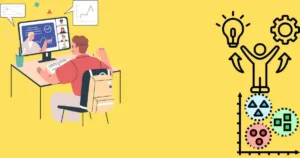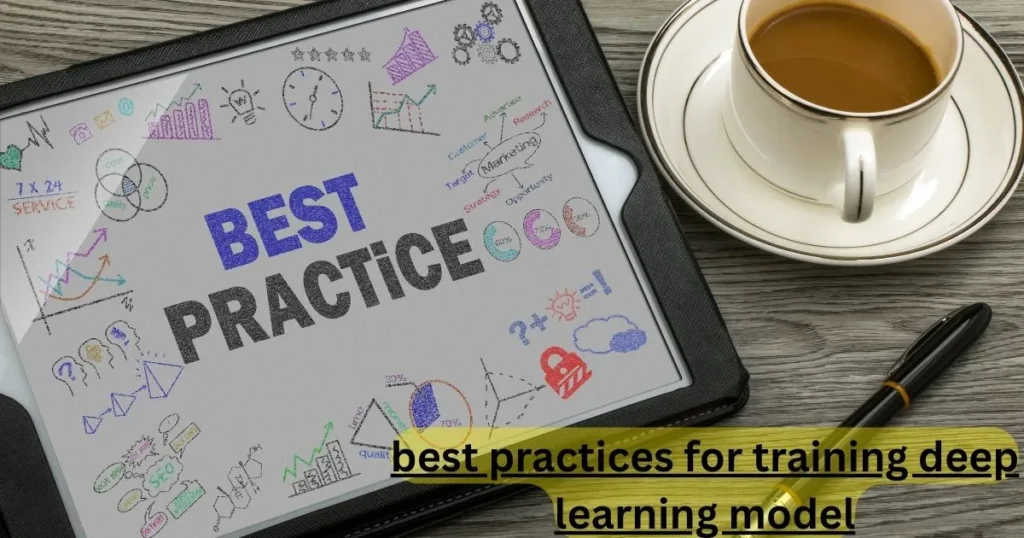Best Practices for Training Deep Learning Models a kid to identify objects. They might never fully learn if you give them too few or similar instances. However, magic occurs when structure, patience, and examples are properly balanced.
From voice assistants and translation apps to facial recognition and self-driving cars, Best Practices for Training Deep Learning Models have completely changed how we use technology. But how we train deep learning models is a key component hidden beneath these intelligent systems.
Using straightforward language, real-world examples, and a methodical approach, we’ll guide you through the best methods for training Best Practices for Training Deep Learning Models in this post. This tutorial will assist you in training deep learning models with clarity and confidence, regardless of your level of experience or desire to enhance your performance.
1. Start with the Correct Information
Best Practices for Training Deep Learning Models require high-quality data, much like a cook needs fresh ingredients. No matter how sophisticated the algorithm is, bad data can cause your model to be incorrect.
✅ Recommended Procedures: Clean Your Data
Eliminate duplication, correct mistakes, and deal with missing values. Use tools such as Pandas to preprocess data effectively.
Correctly Label
Poor labeling results in poor forecasts. For picture and object detection tasks, use trustworthy labeling tools such as Labelbox or Roboflow.
Make Use of Data Augmentation
By rotating, flipping, zooming, or adding noise to preexisting photographs, this method generates new data. For quick and adaptable augmentation, try Albumentations.
Anecdote: Until he included images taken in several settings (outdoors, low light, and pocket shots), a developer’s model for detecting damaged phone screens performed poorly. The accuracy of the model increased from 68% to 92% with data augmentation.
2. Select the Appropriate Model Architecture
Different model structures are required for different types of problems. The trick is selecting the appropriate deep learning architecture.
🔧 Quick Guide: Convolutional Neural Networks (CNNs) such as ResNet, VGG, or MobileNet are used for picture classification.
Use LSTM, Recurrent Neural Networks (RNNs), or more recent Transformer models like BERT or GPT for text or language tasks.
Try using GRU or LSTM models for time-series forecasting.
Use gradient boosting frameworks such as XGBoost, LightGBM, or CatBoost for structured or tabular data.
✅ Pro Tip: To have a better understanding of your dataset, start with a basic model. Then, if necessary, it will switch to more intricate architectures.
3. When feasible, use transfer learning
Using a model that has previously been trained on large datasets is preferable to starting from scratch.
Reusing and refining a pre-trained model on your dataset is possible using transfer learning.
Models such as ResNet50 (trained on ImageNet) perform well for picture tasks.
Try using GPT-2 or BERT for linguistic tasks.
In addition to saving time and money, this frequently yields better findings, particularly when data is few.
4. Steer clear of underfitting and overfitting
Consider a pupil who knows all of the answers by heart but finds it difficult to respond to a surprise inquiry. Overfitting is what that is. Now consider an underfitting student who hardly learns and merely makes educated assumptions.
🔍 Advice for Finding Balance: To lessen overfitting, include dropout layers.
For complexity penalization, use L2 Regularization.
Plot the validation loss vs training to evaluate the model’s performance.
When validation loss begins to rise, use early halting to end training.
5. Adjust the Hyperparameters
Learning rate, batch size, and number of layers are examples of hyperparameters that you select before training. Model performance can be significantly altered by adjusting them.
Make use of these resources:
Optuna: Smart search-based automated hyperparameter tweaking.
Scalable tuning for several experiments is known as Ray Tune.
For simpler issues, Grid Search or Random Search works well.
💡 Anecdote: A friend increased his spam classifier’s F1 score by 20% by simply changing the learning rate from 0.01 to 0.001. Hyperparameter tweaking is that effective!
6. Use the Proper Hardware When Training
It might take days or even weeks to train a CPU. For this reason, the majority of experts use GPUs or TPUs to train models.
🔌 Suggested Platforms: Free GPU access via Google Colab.
Additionally, Kaggle Notebooks provide free GPU use.
Paid cloud computing options for larger workloads include Paperspace, AWS, or Azure.
7. Evaluate Performance Properly
Don’t depend solely on accuracy. Other measures might be more important depending on the issue.
📊 For imbalanced classification, use the following assessment metrics: F1-Score, Precision, and Recall.
For regression issues, use Mean Squared Error (MSE).
Confusion Matrix: To show which forecasts are true or incorrect.
Real-time performance tracking is made simple by visual tools such as TensorBoard and Weights & Biases.
8. Test Before Deployment
Before implementing your model in production:
Use unknown data to test it.
Be mindful of biases, particularly when doing delicate tasks like facial recognition or loan approval.
To see how the model works in real time without letting people see it, do A/B testing and think about shadow deployment.
9. Use MLOps to Engage in Continuous Learning
Your model requires version management, retraining, and monitoring even after deployment.
🛠 Use MLOps tools such as MLflow for deployment and experiment tracking.
Full-stack model training and serving is done with KFP.
Airflow: To automate model changes and data pipelines.
Concluding Remarks
Writing code is only one aspect of training Best Practices for Training Deep Learning Models. Combining clear data, astute design decisions, regular assessment, and ongoing development is a craft.
These best practices will help you:
Create more accurate, quicker, and more intelligent models.
Steer clear of novice errors that cost you time and money.
Get the self-assurance you need to produce your models.
“Deep learning is simply well-trained math; it is not magic.” But it feels amazing when properly trained.
🔗 Practical Resources: Andrew Ng’s Deep Learning Specialization
The documentation for Keras
Tutorials for PyTorch


